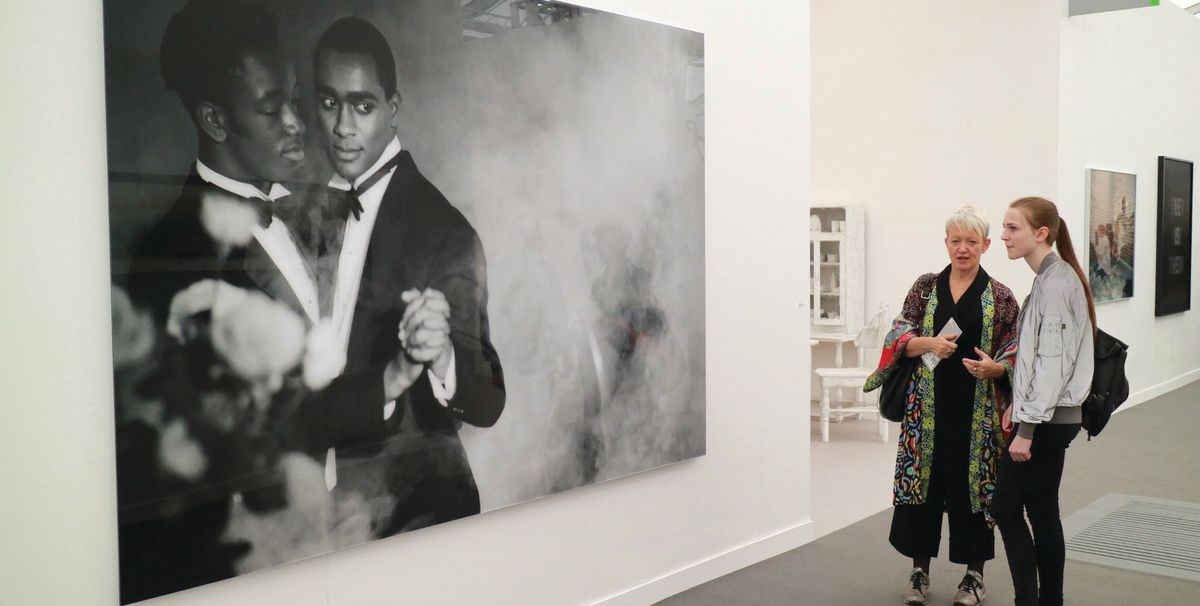Isaac Julien, Pas de Deux No. 2 (Looking for Langston Vintage Series) (1989/2016)
Victoria Miro
When Isaac Julien made the film Looking for Langston in 1989, the Aids crisis was at its nadir. By the end of that year, 27,408 people had died from Aids-related illnesses, including several of the film’s actors. Julien’s large-scale photograph on Victoria Miro’s stand is part of a series derived from the film, which is a tribute to Langston Hughes, one of the writers at the centre of the Harlem Renaissance in the 1920s. “Isaac demonstrated a level of radicalism in making a work about gay black men in the late 1980s,” says a spokesman for the gallery. Prices for the prints, which are due to go on show at Photo London (18-21 May), range from £20,000 to £55,000.
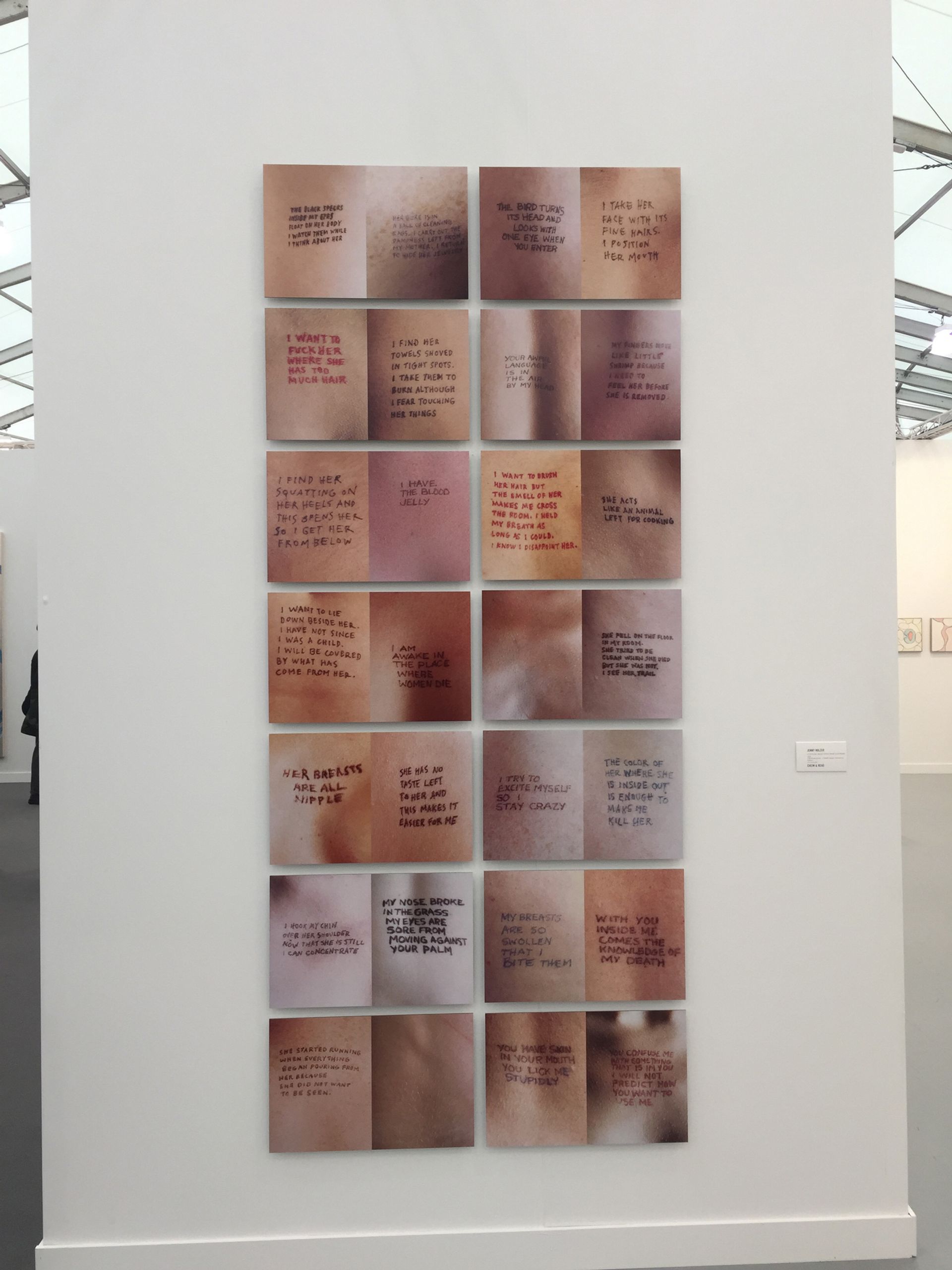
Jenny Holzer, Untitled (Selections from Lustmord) (1994)
Cheim & Read
The Women’s March on Washington, DC—a call for gender equality that drew around 500,000 people to the US capital in January—has inspired Cheim & Read’s presentation at the fair. Works in pink by artists such as Lynda Benglis and Louise Bourgeois fill the stand, a nod to the pink “pussy hats” worn by many of the protesters.
The US artist Jenny Holzer is showing a series of images of texts inscribed on skin, called Untitled (Selections from Lustmord) (1994). “Lustmord was written about the targeting, and rape, of women and girls during the war in the former Yugoslavia, as military strategy. Of course, rape is routine in peacetime as well,” Holzer tells us. “The voices in Lustmord are those of perpetrators, victims and observers.” The work is priced at $45,000.
“By featuring both historical and recent works by female artists, who to us have always been empowered, the exhibition is a reflection of an important moment in contemporary society,” says Maria Bueno of Cheim & Read.
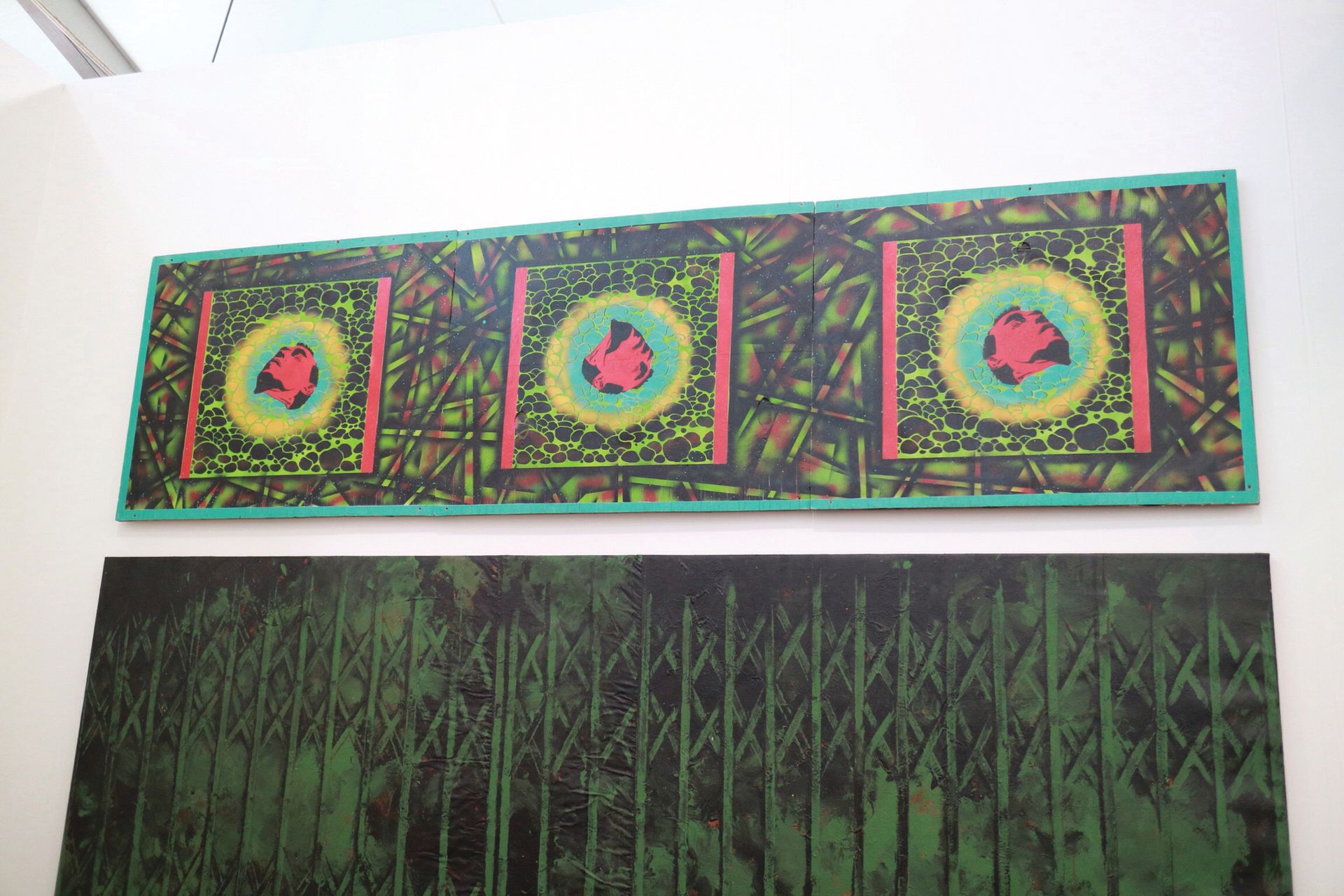
David Wojnarowicz, Untitled (Peter Hujar Dreaming triptych) (1982)
P.P.O.W.
This series of stencilled portraits depicts David Wojnarowicz’s muse and lover, Peter Hujar, who died of an Aids-related illness in 1987. The work hung above the storefront of Civilian Warfare, the East Village gallery where Wojnarowicz had exhibitions in 1983 and 1984. The artist’s imagery has come to symbolise the devastation of the Aids epidemic and the homophobia of the US during Ronald Reagan’s presidency. Wojnarowicz also died of an Aids-related illness, in 1992.
The artist Anton van Dalen, who is showing The Pigeon Car (1987) on P.P.O.W.’s stand at the fair, gave Wojnarowicz tips for making art. Van Dalen says that the “1980s were an incredibly painful time, as the Reagan administration was in denial about Aids. There was such ignorance, just like there is today under Trump.”
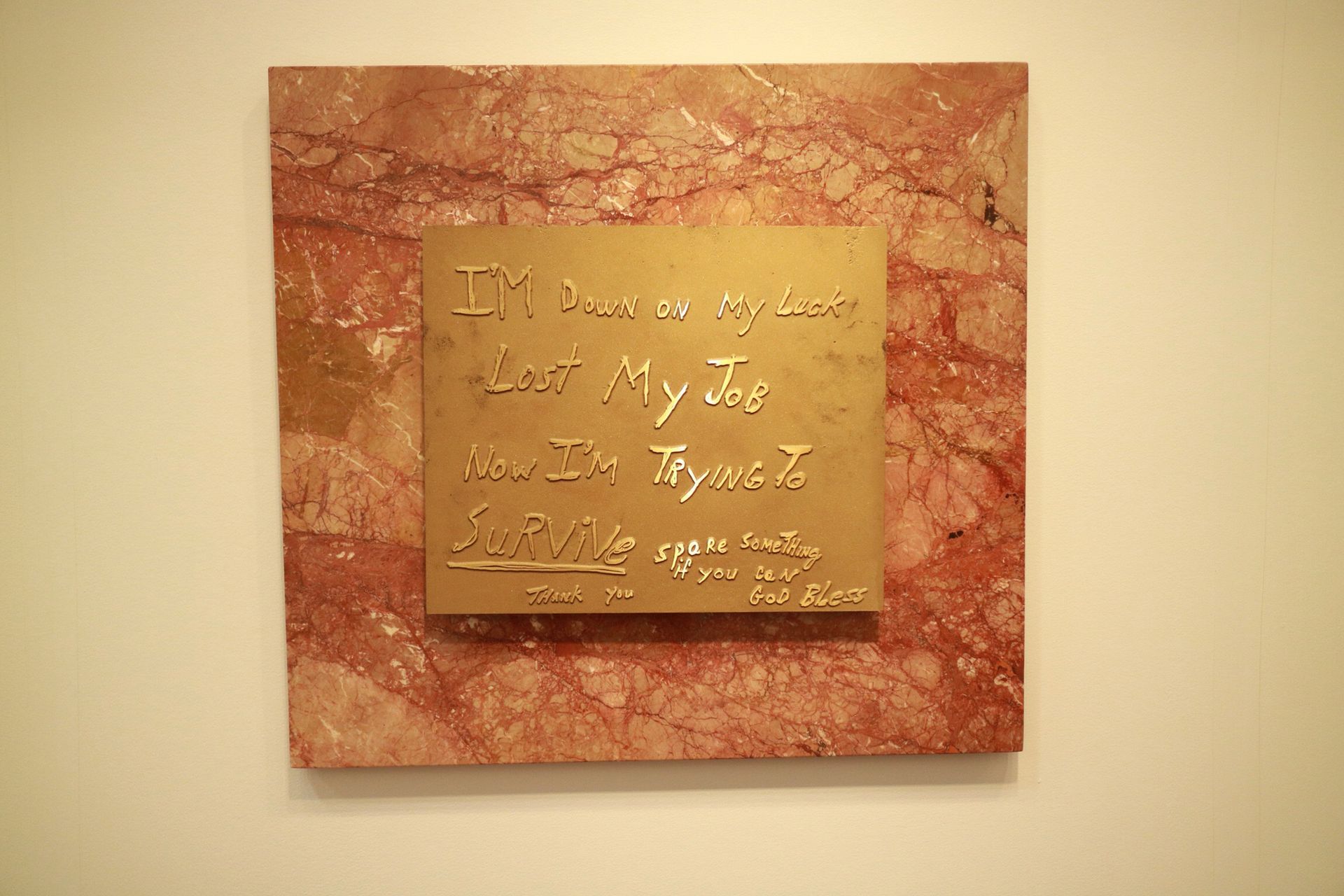
General Idea, Homeless Sign For Trump Tower (1989)
Esther Schipper
In 1989, the artist collective General Idea found a note from a homeless person scrawled on a piece of cardboard outside their New York apartment. “It was a sign of the times, so we wanted to make it into a real sign of the times,” says A.A. Bronson, the surviving member of the group (Felix Partz and Jorge Zontal both died of Aids-related illnesses in 1994). The handwritten message was cast in bronze and mounted on a slab of pink marble resembling that found in the lobby of Trump Tower. “Trump Tower stood in for a certain philosophical position towards issues of poverty and homelessness. Little did I know what the future would bring,” Bronson says. The work sold for an undisclosed sum during the VIP preview of the fair.

Andres Serrano, America (2002-04)
Galerie Nathalie Obadia
Andres Serrano’s photographic series America (2002-04) comprises portraits of various Americans, ranging from a Boy Scout to a pimp and President Trump, who is shown here alongside a Mexican migrant. The US artist started the series in response to the 9/11 terrorist attacks with the intention of portraying a range of ordinary and famous US heroes and heroines.
“It is fascinating to see Trump as he was then [in 2004],” says the Paris- and Brussels-based dealer Nathalie Obadia. “He was certainly less well known than Snoop Dogg [the rapper; another Serrano subject]. How things have changed.” The works range in price from $20,000 to $70,000.
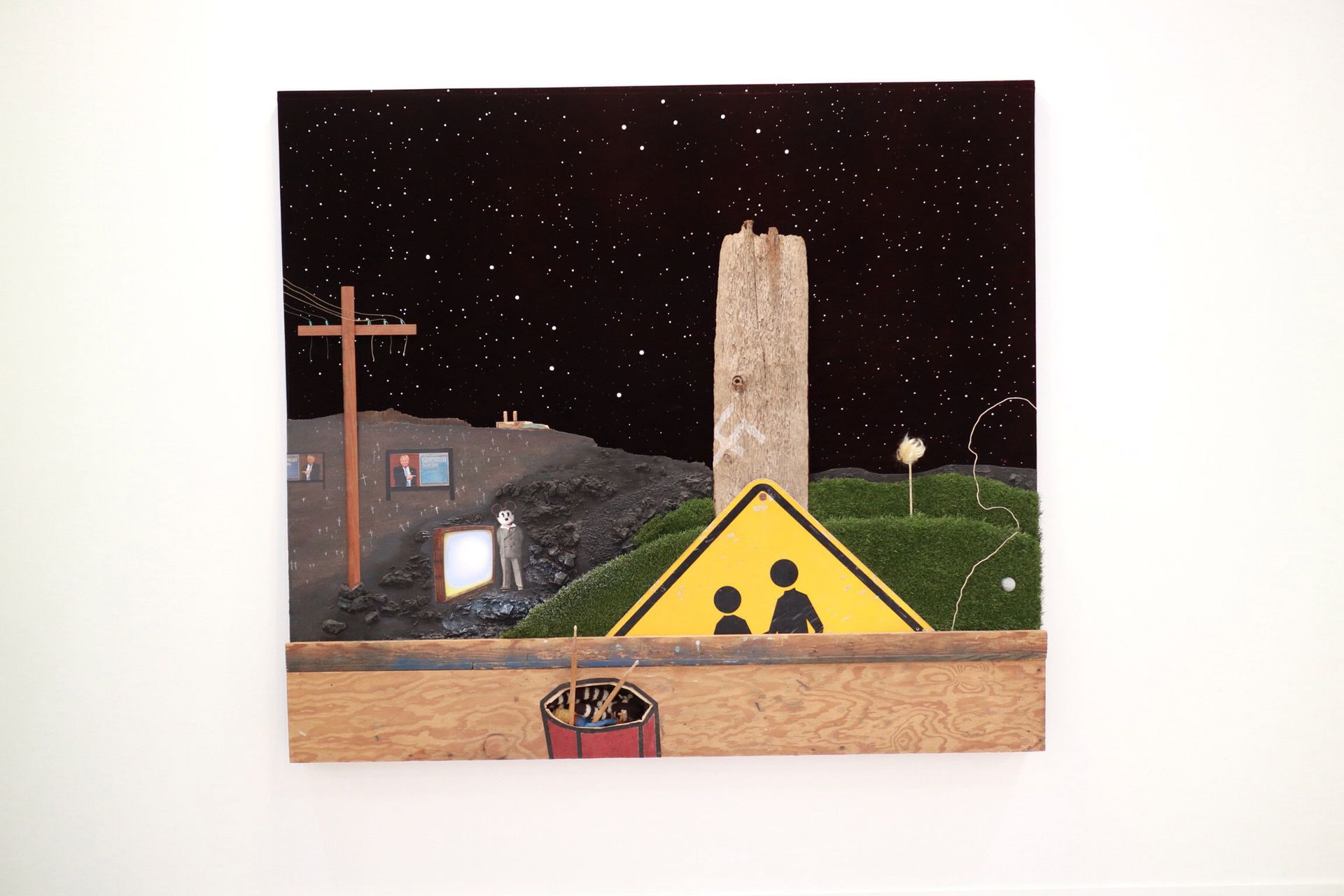
Llyn Foulkes, Night Train (2016)
Sprüth Magers
In Llyn Foulkes’s painting, President Trump’s face can be seen on two Goldman Sachs billboards, while a blonde wig sprouts from a hill. Together with a suited Mickey Mouse, they form part of a nocturnal landscape seen from a train window. “Like history painters, Foulkes has always reflected the current political moment,” says Andreas Gegner, a director at Sprüth Magers. “This is a literal landscape, but it’s also a political landscape.” The half-swastika is in fact “L.F.”—the artist’s initials. The work sold on the opening day to a New York-based collector for $325,000, a shade more than the $308,000 a day spent on Trump’s visit to the city this week.


